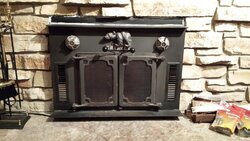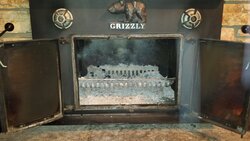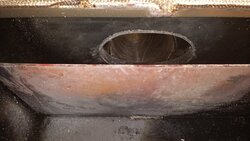Hi, this is my first post here, first time owning an insert (or stove of any kind), just trying to figure things out and would appreciate any help.
I have been searching the internet looking for the model and any instructions for my insert. We recently purchase a house with this installed and I am not 100% sure on how to use it. I would like to get to the point of burning 24/7 in it. Does anyone know what model Grizzly this is or anything about it? See pictures. I am guessing it is from the early 80s.
The previous owner has the chimney relined with the proper adapter for the stove. It should be insulated around the firebox and all the way up the flue.
We have had one fire in it so far and the stove was so hot I could barely touch the air control knobs on the front. It was not a roaring fire either. Is this normal?
I am also thinking that I should remove the fire grate if I want to use this as intended?
I have been searching the internet looking for the model and any instructions for my insert. We recently purchase a house with this installed and I am not 100% sure on how to use it. I would like to get to the point of burning 24/7 in it. Does anyone know what model Grizzly this is or anything about it? See pictures. I am guessing it is from the early 80s.
The previous owner has the chimney relined with the proper adapter for the stove. It should be insulated around the firebox and all the way up the flue.
We have had one fire in it so far and the stove was so hot I could barely touch the air control knobs on the front. It was not a roaring fire either. Is this normal?
I am also thinking that I should remove the fire grate if I want to use this as intended?





 ) Mine turned white from the heat cure and didn't crack or fall out... I think yours just Air Dried too long....
) Mine turned white from the heat cure and didn't crack or fall out... I think yours just Air Dried too long....